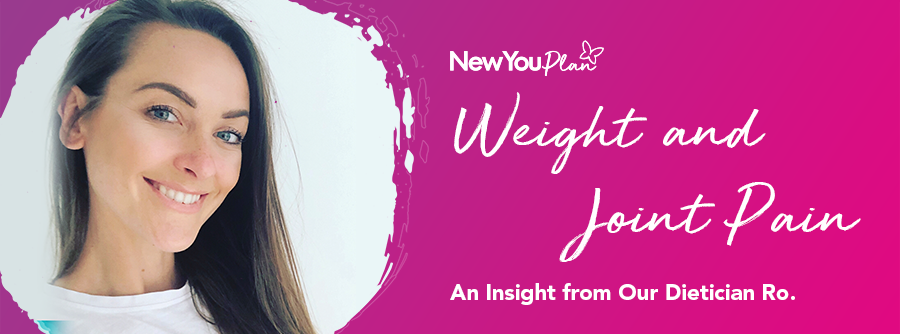
Links Between Weight and Joint Pain
Link between weight and joint pain
What is joint pain?
Joint pain such as in the knee, is a very common problem. It can happen in just one joint or in many such as the hands, feet, knees, hips and wrists.
There can be many causes of joint pain however it is strongly associated with weight. Weight can affect our joints in a number of ways
- By adding extra pressure to joints, increasing stress and breaking down the cartilage between the joint. Causing the bones to rub together causing pain and irritation
- Carrying excess weight may increase inflammation levels in the body which may lead to joint pain
- The more weight we bear the more wear and tear the joint is getting every time we move
If you are starting to feel joint pain when you are going about your normal day that isn’t related to a specific injury, one of the first things you can do is to check your weight.
Osteoarthritis is the most common joint disorder and can most commonly affect hands, knees, hips, back, and neck. If joints are persistently painful, stiff and difficult to move it is important to to see your GP in order to access the necessary treatment.

The role of weight
When we walk it is estimated that a force of nearly three to six times a person’s body weight is exerted across the knee. Having a higher body weight significantly increases the force on the knees.
Women and men with a BMI of over 30 have 4 to 5 times the risk of developing osteoarthritis in the knee compared with people of a lower weight (1,2). Overweight has also been associated with higher rates of hand osteoarthritis.
Losing weight has been shown to reduce the progression of knee osteoarthritis by 50% (4) and can reduce inflammation (5).
Tips for weight loss when struggling with joint pain
The current guidelines for management of joint pain and osteoarthritis recommend weight loss (6). Reducing weight can have a significant effect by reducing the everyday pressure and load on the joints (7), lessening inflammation and benefiting the cartilage (8).
Creating a calorie deficit is required to lose weight, combining changes to our diets as well as incorporating exercise into daily lifestyle is the optimal way to do this and can significantly improve mobility and pain (9). For those suffering with osteoarthritis and joint pain, it has actually been found that those who lose a large amount of weight initially have a better long-term prognosis.
Dietary changes
While reducing calories is an important factor when losing weight it is also important to maintain the nutritional quality of any weight loss diet. Incorporating these tips can help you to lose weight in a healthy way that will benefit your joints.
- Exercise portion control and having a regular meal pattern can help to curb overeating. Work off the guide of filling plate half with vegetables salad or fruit, a quarter with protein and a quarter with whole grain carbohydrates.
- Consuming a diet that includes lots of antioxidant nutrients such as fruit and vegetables, oily fish, whole grain carbohydrates, healthy monounsaturated fats and that is lower in saturated fats and added sugar can help you to lose weight as well as reduce inflammation
- Opting for higher fibre options may help with weight management as well as reducing joint pain.
- Diets higher in protein can regulate appetite as well as support maintenance and repair of joint supporting muscles. Opting for more plant based proteins and lean meats is recommended over red and processed meats.
- Having a support network and easily accessible stress management strategies can also be crucial for the success of weight loss and weight maintenance plans.
It is important that a lower calorie diet still provides all of the nutrients we require, in order to reduce the risk of developing nutritional deficiencies and further health problems.
Exercise
People with painful joints may be put off doing exercise as moving around can be more difficult reducing the ability to do and enjoy exercising. Exercise is however extremely beneficial and important for the health of our joints. Incorporating gentle exercises such as aerobic walking, yoga, tai chi and balance exercises such as Pilates, as well as water exercises, can activate the muscles without burdening the joints too much.
Doing these types of exercises can help to maintain and improve muscle mass, which may have been lost due to inactivity, this strengthens muscle and supports the joints, helping to reduce pain.
Losing weight can be harder for those living with joint pain however, taking those first steps to reducing weight can however have a big impact and can be well worth it for the beneficial outcomes, losing just one pound of weight can take away four pounds of pressure from the knees (7).
As well as improving joint pain, losing weight can also have a major impact on the risk of developing further health conditions such as cardiovascular disease or diabetes increasing overall wellbeing and quality of life.
Take action today and reduce your risk of developing Joint Pain by getting started on plan, or use this as a motivation tool to keep going!






I just started the New You Plan a couple of days ago. In the booklet it asked to list 10 Reasons why you want to be slim and healthy and the first thing I wrote was to help ease pain in joints. Over the past year the pain in my hips, legs and arms has gotten much worse. As a result I didn’t feel much like walking my usual 10,000+ steps a day. The weight I had put on had caused this. From 10st 3lb up to 12st 10. I won a meal replacement diet with a different company and lost 11lb in three weeks and could instantly feel the difference in my pain levels. Completely changed. I still have a way to go but I’m positive this plan will help. The food is much nicer and more filling. Doctors will tell you that having extra weight causes joint pain but most of us don’t listen. It’s also harder to exercise or walk when you’re in pain. The first week I didn’t do any extra walking other than the norm but the second week I aimed for 5,000 steps a day and now after a month I can do up to 10 k sometimes more without realising. I bought a Samsung fit which helps motivate me to hit goal steps.
One thing I tell myself is : my legs and body hurt days when I don’t walk so I may as well have a reason for them hurting “.
Thank you for your kind words Sabrina, We really hope we can have a real positive impact on your health and please let us know if you need anything!x
I will. Thank you x